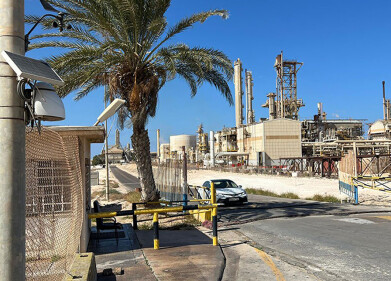Air Quality Monitoring
Air quality around planned new schools in England “alarmingly poor”
Sep 03 2024
The air quality around planned new schools in England is “alarmingly poor,” with 86% of sites exceeding World Health Organization (WHO) targets on major air pollutants, reveals an analysis published online in the Archives of Disease in Childhood.
The consequences for health from exposure to excessive levels of air pollutants are well known, say the researchers, who call for air quality assessment at all stages of planning to be mandated, and legislation and guidance to be updated as a matter of urgency.
The latest WHO Global Air Quality Guidelines (AQG), published in 2021, estimate that air pollution is responsible for nearly 7 million premature deaths every year. These guidelines set out numerical targets for annual exposure to major pollutants, including small particulate matter (PM25, PM10) and nitrogen dioxide (NO2).
The targets were revised downwards after conclusive evidence revealed that even lower levels of these pollutants than previously thought are harmful, note the researchers.
To assess pollutant levels at the sites of newly approved and planned schools, and to find out whether pupils (and staff) are likely to be protected from associated risks, the researchers obtained a list of all 187 new schools to be built between 2017 and 2025 in England.
The researchers assessed the air quality at 147 of these sites against the latest WHO air quality targets for particulate matter and NO2 and against pollution levels across the UK, using annual average air quality data derived from postcodes. The sites comprised 60 new primary schools, 44 secondary schools, 37 all-through schools, and 6 sixth form colleges.
The analysis revealed that 86% (126) of all these new schools exceeded all 3 of the WHO targets studied, and every location exceeded at least one. Average readings of PM25 across all school sites were more than double those recommended by the WHO.
Only 6 locations breached one WHO target: 4 in the South West; 1 in the South East; and 1 in the West Midlands. The rest breached 2 or more.
When assessed against national levels of air pollutants, 3 out of 4 of the sites (76%; 112) were as polluted, or more polluted, than 60% of all other postcodes in the UK.
Pollutant levels were particularly high at sites in London, but were also high at sites in Birmingham, Manchester, and Leeds, while those in other large English cities, including Liverpool, Bristol, and Newcastle, were relatively low. Pollutant levels were lowest at sites in the counties of Devon and Cornwall.
National guidance—both statutory and voluntary—for new school proposals covers various key standards against which plans must be judged, but none includes air quality or air pollution, so the researchers checked the proposals for 36 of the 147 sites, searching each for the terms ‘air quality’ and ‘pollution’. None included these terms.
They also reviewed current building regulations, and found that although these did include limited information about air pollutants, they didn’t account for the significant variations caused by seasonal weather and traffic.
The current regulations also fail to take into account how widespread poor air quality is, and place greater emphasis on ventilation and fresh air rather than on filtration systems.
But unfiltered natural ventilation through windows and passive vents brings polluted outdoor air inside and assumes that major pollutants are absent, which is clearly not the case, point out the researchers.
The researchers acknowledge that they used annual averages to estimate air pollution levels at new school sites, and that more granular data, incorporating different times of day and seasonality, would provide a more detailed picture of exposures. Nor did they analyse the reasons for identified poor air quality at individual sites.
But the findings indicate that air quality around new schools is “alarmingly poor,” prompting them to urge the Department for Education to update the guidance on new school proposals so that air quality assessment is mandatory at the proposal stage.
“New buildings or campuses of existing schools should be given the same consideration and therefore planning regulations also need to be updated,” to ensure that air quality is included in the public consultation stage and that building and site design minimise the impact of air pollution on children, they add.
“Building regulations must also be updated to emphasise that poor air quality is widespread and significantly detrimental to health,” they insist, adding that two or more WHO air quality breaches should warrant on-site monitoring and expert advice to be sought.
“Unless current recommendations are replaced with mandatory standards, it is unlikely that those proposing or designing new schools will make these assessments,” they warn.
And they conclude:“The public health implications of avoidable childhood exposure to poor air quality could have significant effects on both the quality adjusted life years of the population and financial health expenditure in the United Kingdom. Children deserve protection from avoidable harm while at school.”
Digital Edition
AET 28.4 Oct/Nov 2024
November 2024
Gas Detection - Go from lagging to leading: why investment in gas detection makes sense Air Monitoring - Swirl and vortex meters will aid green hydrogen production - Beyond the Stack: Emi...
View all digital editions
Events
Jan 12 2025 Abu Dhabi, UAE
Jan 14 2025 Abu Dhabi, UAE
Jan 20 2025 San Diego, CA, USA
Carrefour des Gestions Locales de L'eau
Jan 22 2025 Rennes, France
Safety, Health & Wellbeing LIVE
Jan 22 2025 Manchester, UK



















